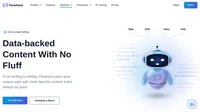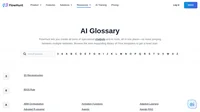Dash is an open-source framework designed to facilitate the creation and deployment of data visualization applications. Released in 2017 by Plotly, Dash allows users to build analytical web applications using Python without requiring in-depth knowledge of web development technologies. This makes it particularly popular among data scientists and analysts who wish to create interactive dashboards and data visualization interfaces quickly and efficiently. Dash stands out by enabling the integration of complex Python analytics in a user-friendly web interface, serving as a bridge between data scientists and business stakeholders.
Core Components of Dash
Dash applications are built using three core technologies:
- Flask: This is a lightweight WSGI web application framework in Python that provides the server-side functionality of Dash applications. Flask is known for its simplicity and flexibility, allowing developers to choose how they want to implement their applications.
- React.js: A JavaScript library used for building user interfaces, React.js is employed by Dash to render the front end of applications. React.js enables the creation of dynamic and responsive interfaces, crucial for interactive data visualization.
- Plotly.js: This is a graphing library that generates the visualizations present in Dash apps. Plotly.js provides a range of charting features, including line plots, scatter plots, and 3D charts, which are essential for creating interactive and engaging data visualizations.
Dash abstracts the complexities of integrating these technologies, allowing users to focus on writing Python code to define the layout and functionality of their applications. This approach empowers developers to create sophisticated web applications using a single programming language, Python.
Key Features of Dash
1. Dash Apps
Dash applications, or Dash apps, provide a point-and-click interface to Python models, enabling users to interact with complex data visualizations without needing advanced programming skills. These apps serve as a bridge between data scientists and business stakeholders, allowing the latter to make informed decisions based on interactive and dynamic visual data.
2. Dash Core Components and HTML Components
- Dash Core Components: These are pre-built components that facilitate the creation of interactive user interfaces. Examples include sliders, dropdowns, and graphs, which allow users to interact with data in real time. These components are designed to be flexible and customizable, enabling developers to tailor the user interface to specific needs.
- Dash HTML Components: These are simple wrappers around HTML tags, allowing users to structure their Dash applications using familiar HTML elements. This feature simplifies the process of designing web applications by leveraging existing web development knowledge.
3. Interactivity and Callbacks
Dash applications are interactive by design, enabling users to input data, select parameters, and view real-time updates. This is achieved through the use of callbacks, which are Python functions that automatically update the app’s components when user interactions occur. Callbacks are a powerful feature that allows for the creation of dynamic and responsive applications, as they can handle complex user interactions and data processing.
4. Data Visualization and Plotly Integration
Dash is built on Plotly, a leading data visualization library, which ensures that users can create high-quality, interactive charts and graphs. This integration allows for complex data representations such as scatter plots, bar charts, and heatmaps. Plotly’s extensive range of visualization options and customization capabilities make it an ideal choice for creating detailed and informative dashboards.
5. Deployment and Scalability with Dash Enterprise
For production-grade applications, Dash Enterprise offers a scalable platform for deploying Dash apps across organizations. This enterprise version includes features such as authentication, centralized deployment, and integrations with IT infrastructure, making it suitable for large-scale data science projects. Dash Enterprise enhances the capabilities of Dash by providing tools for managing and scaling applications, ensuring that they can meet the demands of enterprise environments.
Use Cases of Dash
1. Data Science and Analytics
Dash is widely used in data science for building dashboards that analyze and visualize data in real time. Its ability to integrate with AI and machine learning models makes it a crucial tool for data scientists looking to communicate their findings effectively. Dash’s interactive features enable data scientists to present their analyses in a way that is accessible and understandable to non-technical stakeholders.
2. Business Intelligence
In business intelligence, Dash serves as a versatile tool for creating dashboards that track key performance indicators (KPIs) and business metrics. Its interactive components allow business users to drill down into data and gain insights into operational and strategic decisions. Dash empowers organizations to make data-driven decisions by providing a clear and interactive view of business performance.
3. AI and Automation Integration
Dash’s capability to integrate with AI models makes it an excellent choice for developing applications that require real-time data processing and visualization. This is particularly useful in fields such as autonomous driving and predictive analytics, where dynamic data visualization is essential. Dash enables the visualization of complex AI models, allowing users to understand and interact with the outputs of these models in real time.
4. Healthcare and Pharmaceuticals
In the healthcare sector, Dash is used to develop applications that visualize patient data, track clinical trials, and monitor drug efficacy. Its ability to handle complex data sets and create interactive visualizations makes it ideal for medical research and analysis. Dash provides healthcare professionals with the tools needed to explore and understand large volumes of medical data, facilitating better decision-making and patient care.
5. Financial Services
Dash is used in financial services to build dashboards that monitor market trends, track investment portfolios, and assess financial risks. Its real-time data visualization capabilities enable financial analysts to make timely and informed decisions. Dash allows financial institutions to visualize and analyze financial data quickly, providing insights that can drive investment strategies and risk management.
Building a Dash Application
The process of building a Dash application involves the following steps:
- Define the Layout: Use Dash HTML Components to structure the application’s interface. This includes adding headings, paragraphs, and other HTML elements. The layout defines the structure and organization of the application, ensuring that it is intuitive and user-friendly.
- Add Interactivity: Use Dash Core Components to introduce interactive elements such as graphs and sliders. Define callbacks to manage user interactions and update the application dynamically. Interactivity is key to engaging users and providing real-time feedback based on their inputs.
- Style the Application: Customize the appearance of the application using CSS. Dash allows for external CSS files to be used, enabling developers to apply consistent styling across the app. Styling ensures that the application is visually appealing and aligned with branding guidelines.
- Deploy the Application: For enterprise-grade applications, deploy the Dash app using Dash Enterprise, which offers enhanced features for scaling and integration with IT infrastructure. Deployment involves making the application available to users, ensuring that it is reliable and performs well under load.
Example Applications
1. Autonomous Driving Dashboard
A Dash app that monitors and visualizes data from self-driving cars, providing insights into object detection and decision-making processes. This application uses real-time data visualization to enhance the safety and efficiency of autonomous vehicles. It demonstrates Dash’s ability to handle complex data streams and present them in an understandable format.
2. Oil and Gas Production Dashboard
This Dash app visualizes oil production data, allowing users to filter and analyze production metrics across different regions. The interactive components enable cross-filtering and drill-down capabilities, providing valuable insights into production trends. This application highlights Dash’s utility in industrial and resource management contexts.
3. Pharmacokinetics Dashboard
A Dash app designed for analyzing pharmacokinetics data, helping researchers understand drug absorption and distribution in the body. This application supports the lead optimization phase of drug discovery by providing detailed visualizations of study data. It showcases Dash’s application in scientific research and development.
4. Financial Reporting Dashboard
This Dash app automates the generation of financial reports, converting data into structured PDF documents. It streamlines reporting processes and ensures accuracy in financial analysis and documentation. This application demonstrates Dash’s potential in automating and enhancing financial reporting workflows.
Research
- Dash Sylvereye: A WebGL-powered Library for Dashboard-driven Visualization of Large Street Networks
This paper introduces Dash Sylvereye, a Python library designed to create interactive visualizations of large street networks using WebGL for GPU-accelerated rendering. The integration with Dash allows for the development of comprehensive web dashboards that coordinate temporal and multivariate street data. The paper presents performance evaluations indicating that Dash Sylvereye can manage street networks with thousands of edges efficiently. Read more - TA-Dash: An Interactive Dashboard for Spatial-Temporal Traffic Analytics
TA-Dash is an interactive dashboard focused on visualizing complex spatial-temporal traffic patterns. It enhances the accessibility of machine learning models in predicting urban traffic by providing a user-friendly interface for non-expert users. The dashboard’s flexible architecture allows it to adapt to new models, making it a valuable tool for urban traffic management and mobility planning. Read more - A Declarative Specification for Authoring Metrics Dashboards
This paper addresses the challenges of creating metrics dashboards, which is often a manual and tedious process. The study reviews production metrics dashboards to develop a declarative specification that simplifies the creation of these dashboards. This approach allows users to focus on interesting data combinations rather than the repetitive task of creating each chart manually. Read more
Exploratory Data Analysis (EDA)
Discover how Exploratory Data Analysis (EDA) uncovers patterns, detects anomalies, and improves data quality with visual techniques and tools.
Data-backed Content With No Fluff
Create data-driven content with FlowHunt’s AI tools. From idea generation to editing, streamline your process for engaging, SEO-optimized results!



